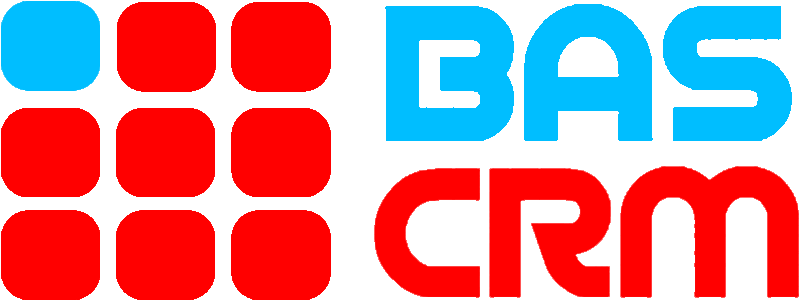Description

vtenext

PlanPlus
Comprehensive Overview: vtenext vs PlanPlus
Certainly! Let's explore the two products: vtenext and PlanPlus, focusing on their primary functions, target markets, market share, user base, and key differentiating factors.
vtenext
a) Primary Functions and Target Markets
- Primary Functions: vtenext is primarily a CRM (Customer Relationship Management) platform that integrates with BPM (Business Process Management) capabilities. Its core functions include customer data management, sales automation, marketing campaign management, customer service, and support. The platform is designed to facilitate the automation of business processes, improve customer interactions, and enhance internal communication.
- Target Markets: vtenext targets small to mid-sized businesses that require robust CRM functionality with integrated process management. It appeals to industries like sales, marketing, telecommunications, finance, and manufacturing.
b) Market Share and User Base
- vtenext is a niche player in the CRM market, which is dominated by larger platforms like Salesforce, Microsoft Dynamics, and HubSpot. It does not have a significant share compared to these giants, but it serves a loyal user base that values its BPM integration and flexibility in process automation.
c) Key Differentiating Factors
- BPM Functionality: One of the major factors that set vtenext apart is its comprehensive BPM capabilities, allowing businesses to automate complex workflows alongside traditional CRM functions.
- Customization: Users often appreciate vtenext for its flexibility and customization options, enabling tailored solutions for specific business needs.
- Open Source Model: vtenext offers an open-source edition, which can be particularly appealing to businesses looking for customizable CRM solutions without high licensing fees.
PlanPlus
a) Primary Functions and Target Markets
- Primary Functions: PlanPlus is known mainly as a personal and professional productivity tool. It integrates features such as task management, calendaring, goal setting, and project planning. It aims to enhance individual productivity and help users align their daily activities with long-term goals.
- Target Markets: PlanPlus targets individual users, professionals, and organizations looking to improve productivity and planning efficiency. It is particularly appealing to users in sectors like consulting, education, and personal development coaching.
b) Market Share and User Base
- PlanPlus operates in the productivity software niche, where it faces competition from popular solutions like Microsoft Outlook, Google Workspace, and Asana. It commands a modest user base, primarily among users seeking comprehensive personal planning functionalities.
c) Key Differentiating Factors
- FranklinCovey Methodology: PlanPlus is distinguished by its roots in the FranklinCovey planning system, which emphasizes personal effectiveness and goal alignment.
- All-in-One Productivity Approach: PlanPlus aims to provide a complete productivity solution by combining task management, calendaring, note-taking, and goal setting in one platform.
- Focus on Personal Development: It uniquely positions itself by also addressing personal development and self-improvement, in addition to typical organizational productivity features.
Comparative Analysis
When comparing vtenext and PlanPlus, it's important to note that these products serve different primary functions and markets. vtenext positions itself more as a business-oriented CRM with process management, while PlanPlus focuses on personal and organizational productivity rooted in goal alignment and time management.
In terms of overall market share, both platforms are niche players in their respective domains, with vtenext finding its niche among smaller businesses needing CRM and process capabilities, and PlanPlus appealing to individuals and professionals looking for comprehensive productivity enhancements.
The key differentiators lie in their core functionalities and the unique value propositions each offers to its target market. vtenext's strength is in business process automation and CRM, while PlanPlus excels in integrated personal and professional productivity solutions.
Contact Info

Year founded :
2011
Not Available
Not Available
Italy
http://www.linkedin.com/company/vte-crm

Year founded :
1998
+32 2 532 23 32
Not Available
Belgium
http://www.linkedin.com/company/planplusbv
Feature Similarity Breakdown: vtenext, PlanPlus
As of my last update in October 2023, vtenext and PlanPlus are tools that cater to business management needs, although they focus on slightly different aspects and target audiences. Here's a breakdown of their feature similarity:
a) Core Features in Common
-
CRM Functionality: Both vtenext and PlanPlus offer customer relationship management capabilities, enabling users to manage contacts, track customer interactions, and maintain customer records.
-
Task Management: Each platform provides tools to manage tasks and projects, allowing users to assign, track, and complete tasks in a collaborative environment.
-
Calendar Integration: They offer calendar functionalities that help users schedule meetings, set reminders, and manage appointments efficiently.
-
Reporting and Analytics: Both platforms offer reporting features that enable users to analyze data and generate insights from their business activities for improved decision-making.
-
Mobile Accessibility: Both solutions provide mobile applications or a mobile-friendly interface to manage tasks and interact with the CRM on the go.
b) User Interface Comparison
-
vtenext: vtenext offers a more technical interface, often perceived as having a steeper learning curve. Its design is typically robust, catering more directly to developers and businesses looking for extensive customization options. The UI might feel more customizable but requires a stronger technological understanding to adapt fully.
-
PlanPlus: PlanPlus tends to offer a more intuitive and accessible interface for general users. It typically stands out for those who prioritize ease of use and straightforward navigation. The design focuses on enhancing productivity without overwhelming users with customization complexity.
c) Unique Features
-
vtenext:
- Process Management: vtenext includes a Business Process Management (BPM) engine, allowing users to automate and manage complex business processes. This feature sets it apart for businesses seeking to integrate CRM with extensive workflow automation.
- Open Source Flexibility: vtenext is open-source, which allows for greater customization and adaptability to specific business needs, appealing to companies with technical expertise.
-
PlanPlus:
- Productivity Tools: PlanPlus is known for its productivity-oriented features that integrate personal and professional task management, making it ideal for users who value productivity enhancement tools integral to their daily routine.
- Goal Management and Prioritization: PlanPlus often emphasizes features related to personal development, goal setting, and task prioritization, appealing to users who appreciate combining life management with business capabilities.
Both vtenext and PlanPlus serve different niches despite sharing some core functionalities. Companies often choose based on their specific needs for customization, user-interface preferences, and specialized features that align with their business processes.
Features

Not Available

Not Available
Best Fit Use Cases: vtenext, PlanPlus
vtenext and PlanPlus are tools designed to improve business efficiency through process automation, customer relationship management, and planning. Here's a breakdown of their use cases and applicability to various sectors:
a) vtenext
Best Fit for Businesses or Projects:
-
Small to Medium Enterprises (SMEs): vtenext is ideal for SMEs that need a cost-effective solution to manage CRM and processes without investing in separate systems. It offers a good balance of functionality and affordability, making it accessible for smaller businesses.
-
Companies Focused on Process Automation: Businesses looking to streamline operations through workflow automation can benefit from vtenext. It is particularly useful for those that want to integrate CRM with business process management (BPM).
-
Industries with Complex Customer Interaction Needs: Sectors like retail, financial services, or healthcare, which require detailed tracking of customer interactions and robust data management, can utilize vtenext for its comprehensive CRM capabilities.
-
Enterprises Seeking Customization: Organizations that require tailored solutions to meet specific operational processes would find vtenext's open-source nature advantageous, as it allows for significant customization.
b) PlanPlus
Preferred Scenarios:
-
Personal Productivity and Team Collaboration: PlanPlus is well-suited for individual professionals and teams that prioritize personal productivity, time management, and goal-setting. It is an excellent choice for environments aiming to enhance focus and accountability.
-
Project Management for Small Teams: Small teams looking to manage projects effectively can use PlanPlus for its robust task management and prioritization features, ensuring alignment and efficient workflow management.
-
Service-Based Professionals: This tool is advantageous for consultants, freelancers, and service-based professionals who need to manage client interactions alongside personal tasks efficiently.
-
Organizations Emphasizing Goals and Habits: For entities focused on integrating goal-setting and habit-forming into their daily operations, PlanPlus aligns well, offering methodologies to enhance performance and motivation.
d) Industry Verticals and Company Sizes
vtenext:
-
Industry Verticals: vtenext is applicable across various industries such as retail, insurance, financial services, and healthcare, where customer management and process automation are critical. Its flexibility allows it to support specific industry needs by customizing workflows and CRM functions.
-
Company Sizes: It is suitable for small to medium enterprises but can also scale for larger organizations needing specific customizations and integrations with other systems.
PlanPlus:
-
Industry Verticals: PlanPlus caters to industries focusing on professional services, education, and non-profit sectors where goal setting, task management, and productivity are key.
-
Company Sizes: It is predominantly aimed at individual users, small businesses, and teams within larger organizations. It scales from personal use to small teams looking for an efficient planning and productivity tool.
In summary, vtenext excels in environments with complex CRM and process automation needs, making it a strong choice for SMEs across various sectors. PlanPlus, on the other hand, caters to individual productivity and small team management, particularly where goal alignment and efficiency are prioritized.
Pricing

Pricing Not Available

Pricing Not Available
Metrics History
Metrics History
Comparing undefined across companies
Conclusion & Final Verdict: vtenext vs PlanPlus
To determine the best overall value between vtenext and PlanPlus, we'll analyze each product and their respective pros and cons.
vtenext
Pros:
- Open Source Flexibility: vtenext offers an open-source CRM solution that allows for significant customization and integration. This flexibility is ideal for businesses needing tailored solutions.
- Process Management Features: vtenext includes strong process management capabilities, allowing users to automate workflows easily.
- Cost-Effective Solution: As an open-source tool, vtenext can be a more cost-effective option if you have the technical expertise to manage and customize it.
Cons:
- Technical Complexity: Implementing and customizing an open-source solution like vtenext may require technical expertise, which might be a challenge for small businesses without an IT team.
- Limited Out-of-the-Box Functionality: Users may need to invest additional resources in setting up and optimizing the system for their specific needs.
PlanPlus
Pros:
- User-Friendly: PlanPlus is generally known for its intuitive interface and ease of use, making it accessible to users with varying levels of technical proficiency.
- Integrated Productivity Tools: It often includes features like task management, calendar integration, and goal setting, which can enhance productivity alongside CRM functions.
- Instant Deployment: Being a more commercialized solution, it often allows for quicker setup and deployment with immediate access to core functionalities.
Cons:
- Less Customizable: Compared to open-source alternatives, PlanPlus might offer less flexibility in terms of customization.
- Potentially Higher Cost: Depending on the plan or package chosen, PlanPlus could be more costly over time, especially for businesses requiring additional features or licenses for multiple users.
Conclusion and Final Verdict
Considering all factors, which product offers the best overall value?
The best value depends on the specific needs of the user or organization. For businesses seeking a highly customizable solution with a focus on process management and who have the technical capability to support it, vtenext offers excellent value.
However, for those looking for an easy-to-use, ready-to-deploy solution with integrated productivity features, PlanPlus may be the better option, especially if the ease of setup and user-friendly interface are prioritized.
Specific Recommendations:
-
For Technical Teams or Custom Solution Needs: Choose vtenext if you need customization and have the technical support to implement and maintain an open-source CRM. It's also ideal if automation of business processes is a significant priority.
-
For Quick Setup and User Accessibility: Opt for PlanPlus if you prefer a straightforward setup with built-in productivity tools, and your organization places a premium on user-friendly interfaces and rapid deployment with minimal technical hurdles.
Ultimately, the decision should align with the specific operational needs, technical capabilities, and budget constraints of the organization or user. Evaluating both products through trial versions or demos can further help in making an informed choice.
Add to compare
Add similar companies




